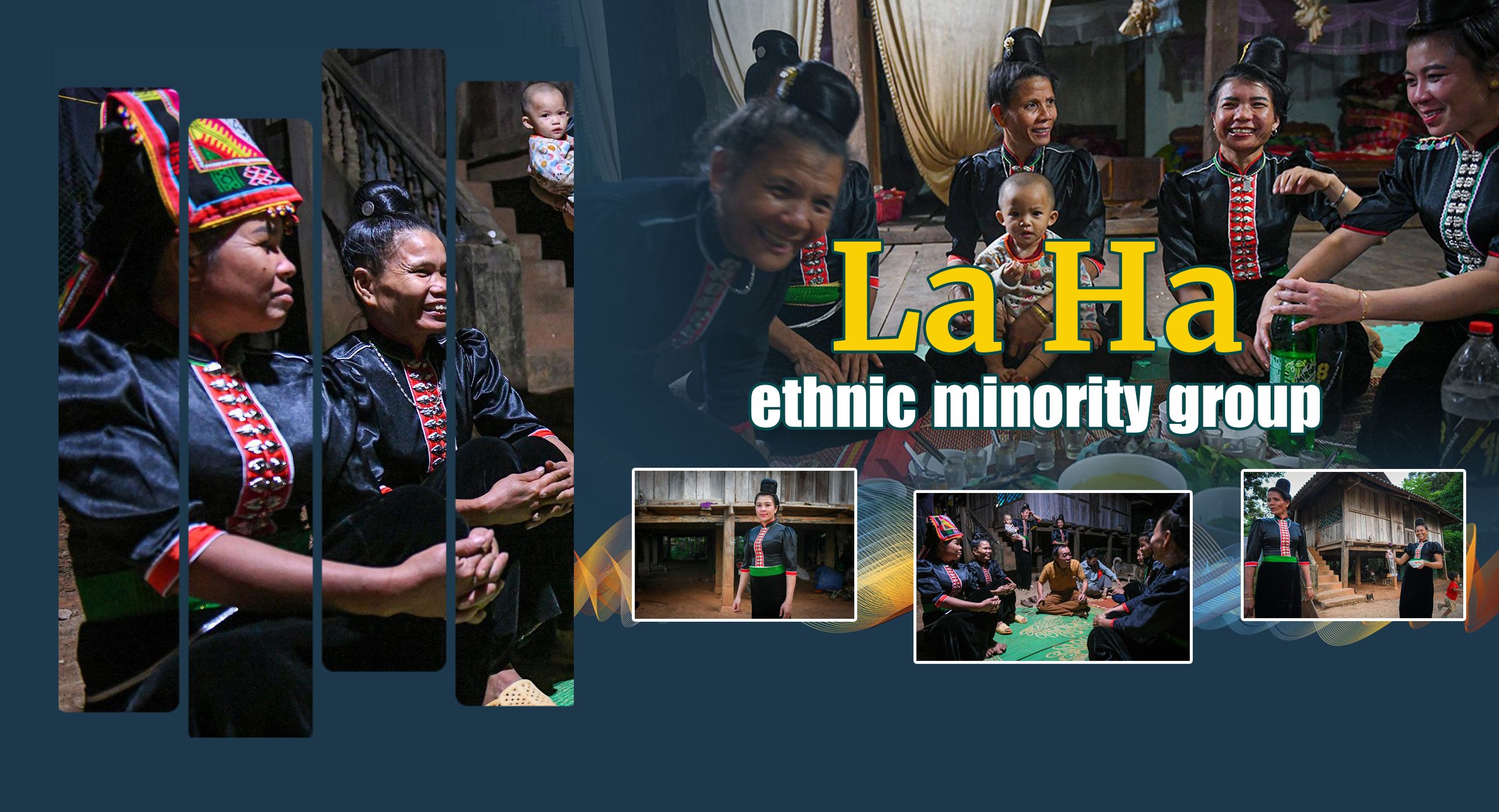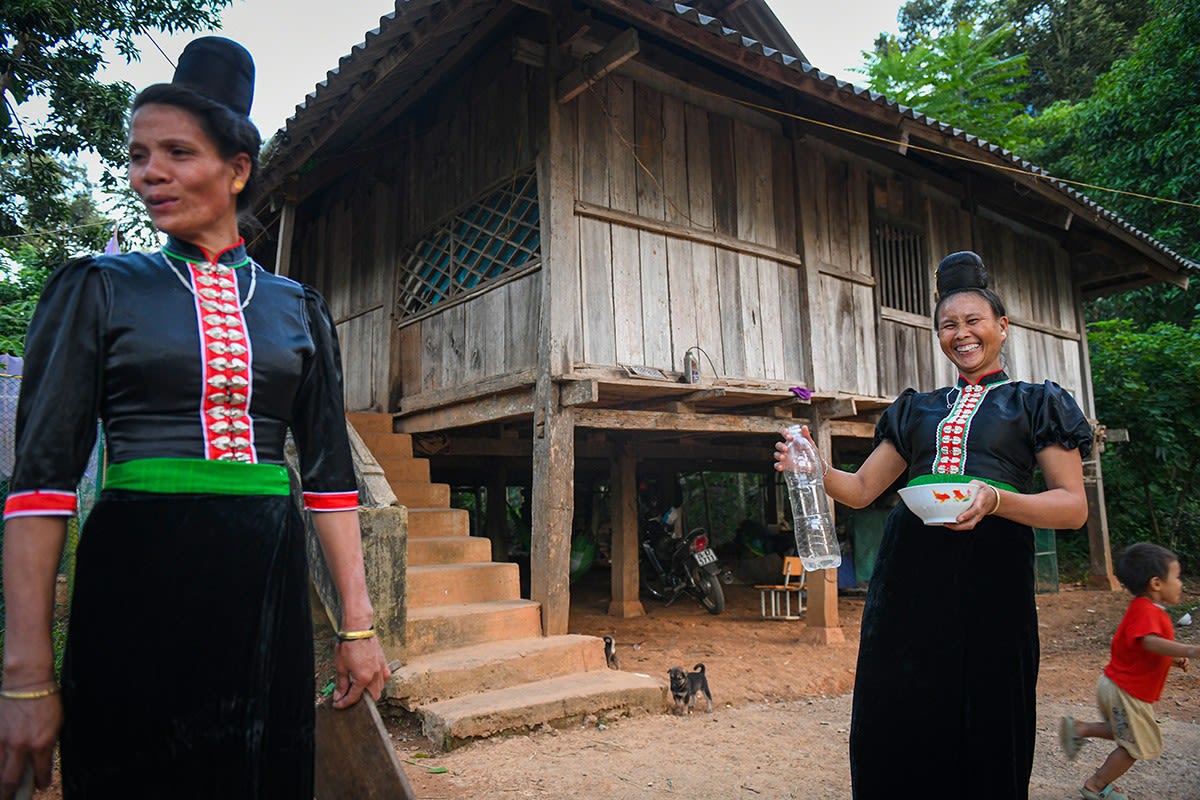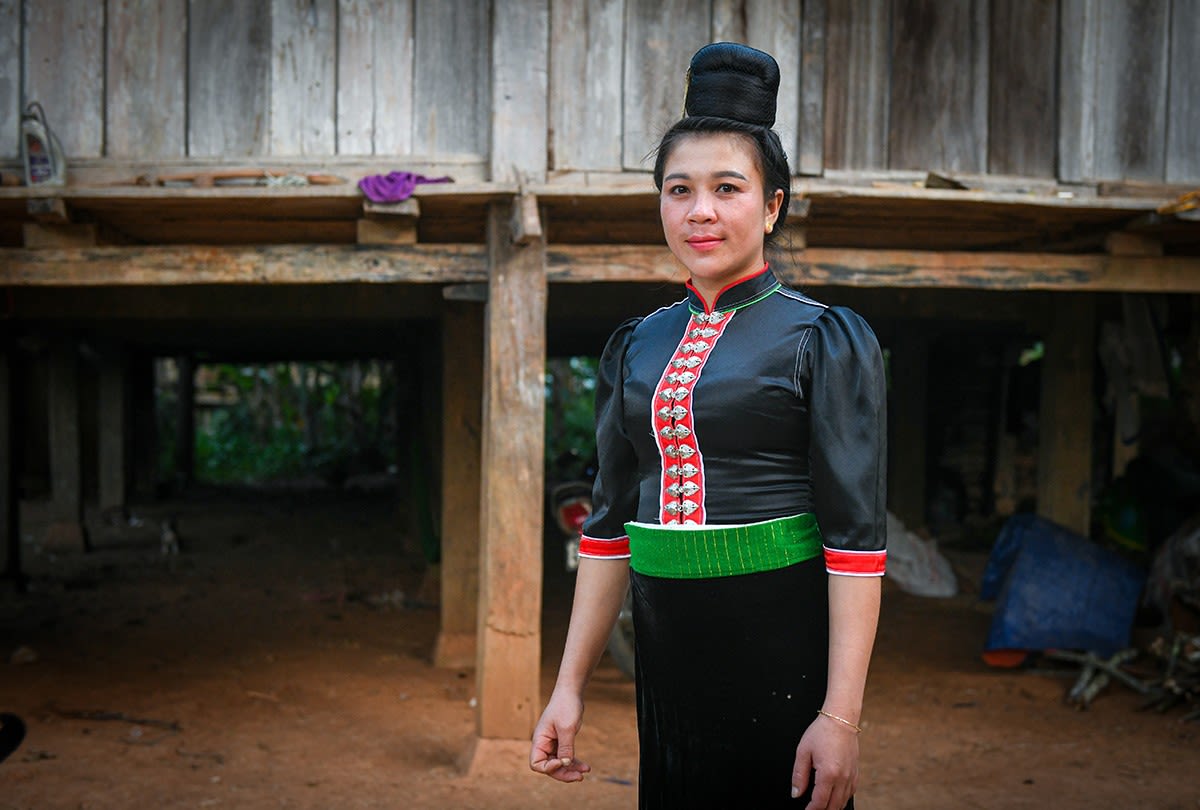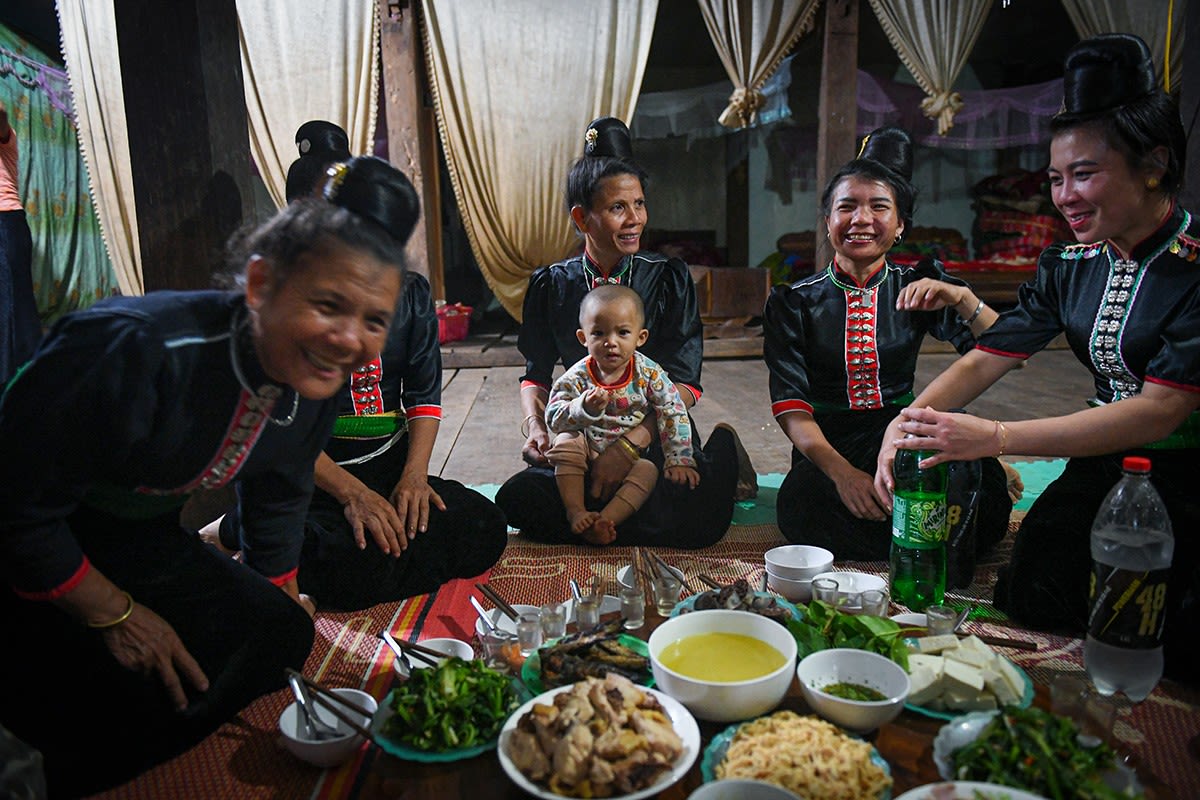
The La Ha people live in the Northwest region of Vietnam, with upland farming being their main occupation. In the last years of the 20th century, the weaving profession was relatively developed with quite sophisticated techniques.
1. Origin
The La Ha people have long lived in the Northwest region of our country.
The La Ha people call themselves La Ha, Kla and Phlao and are called different names by other ethnic groups, such as Xa Khac, Phlac, Khla Xa Cha, Xa Bung, Xa Khao, Xa Tau Nha, Xa Poong, Xa Uong, Bu Ha and Pua. The La Ha people have two groups, namely La Ha Ung – who grow wet rice and Khla Phlao or La Ha Plao – who conduct upland farming.
2. Geographical distribution
According to ancient Thai books, when the black Thai people migrated to the Northwest in the 11th and 12th centuries, they saw the La Ha people residing in many places with many different names.
3. Population, language
- Population: According to the 2019 census of 53 ethnic minorities, the La Ha ethnic group has a total population of 10,157 people, including 5,186 males and 4,971 females.
- Language: Currently, most of the ethnic groups in our country, including the La Ha, live interspersed with each other, so the using of bilingualism and multilingualism has become popular.
The La Ha people live in a community with black Thai, so, in addition to their mother tongue, the La Ha people also learn and use black Thai to communicate. As a result, the La Ha language has absorbed many words of black Thai. In addition, the number of La Ha people who can speak Vietnamese, especially the youth, is also increasing. Due to the interspersed residence and marriage relationships, some La Ha people also know H'Mong, Dao and Muong languages.
4. Main features
- Traditional social institutions: Like other ethnic groups, a village is a unit of settlement and community.
The traditional La Ha family is a small patriarchal family. In the family, the husband and father always play the role of the head of the household and have the right to decide on important affairs. Inheritance: Property in the family belongs to the sons. When daughters get married, they receive a little dowry from their parents.

Solid stilt houses are quite common in La Ha villages. (Photo: THANH DAT)
Solid stilt houses are quite common in La Ha villages. (Photo: THANH DAT)
- Housing: In La Ha villages, two types of stilt houses differ in structure, size and solidity. The temporary house on stilts is built with buried wooden poles, with two compartments and two auxiliary compartments. These compartments have no partitions, including a kitchen space and a sleeping space. Families that have to worship will have an additional altar in the kitchen. Meanwhile, solid stilt houses are quite common in La Ha villages.
- Religion and belief: Like many other ethnic groups, the La Ha also follow the belief of “animism”. They have taboos and worship many kinds of ghosts, called by different names.
Ancestor worship is also a popular belief among the La Ha people. They only worship for two generations, meaning that they only worship their deceased parents.
La Ha people have many taboos in their daily life such as not moving freely or playing in places of worshipping ghosts, daughters-in-law and sons-in-law not being allowed to enter the sleeping place of their grandparents and parents or the worship place, especially on holy days, and the window where ghosts lie, being on the opposite side of the altar.
They never encroach on the ghost forest where the dead are buried. Specifically, it is not allowed to exploit fallen treesor to hunt and release livestockin the ghost forest.

The traditional costume of La Ha women. (Photo: THANH DAT)
The traditional costume of La Ha women. (Photo: THANH DAT)
- Costume: La Ha women often wear a shirt with silver buttons and a black skirt with a blue waistband. They wear a Pieu scarf with embroidered patterns and wear their hair in a bun on the top of their head, after marriage, like Thai women
La Ha men’s costumes are quite simple, consisting of short blouses, loose trousers and headscarves, which are indigo-dyed. In the past, La Ha women also wore jewellery such as chatelaines, silver earrings, necklaces, bracelets, brooches, and others.
- Diet: Changes in the economic and living environment have created direct effects on daily meals and the meals on holidays of La Ha people.
The main food of the La Ha people is corn and sticky rice. However, cassava and taro also play an important role. Sticky rice is usually cooked in a steamed sticky rice pot. Plain rice has also begun to appear in the meals of the La Ha people, but only to treat guests who cannot eat sticky rice. Currently, the La Ha people still keep the habit of eating sticky rice.
Wine is a favourite drink of the La Ha people, especially at receptions, festivals, weddings, and funerals. They often use homemade wine stored in bottles or can wine, fermented rice wine in jugs. Every family brews a few jugs of can wine in their home, to invite guests during free time or on festive occasions.

La Ha people with a tray of rice for guests. (Photo: THANH DAT)
La Ha people with a tray of rice for guests. (Photo: THANH DAT)
- Education: According to the 2019 survey of 53 Ethnic Minority Groups, the percentage of people aged 15 years and over who can read and write is 60.1%, the net attendance rate for children of primary school age is 102.7%, the junior secondary school age is 91.9%, and of the senior secondary school age is 35.1%.
5. Economic conditions
Similar to many other ethnic groups in the northern mountainous region of Vietnam, upland farming is the main occupation of the La Ha people, including growing glutinous rice, cassava, maize and cotton. Only a small proportion of the La Ha people grow wet rice combined with upland farming. Fishing and gathering also play an important role in the economic activities of the La Ha people. In the last years of the 20th century, the weaving profession was relatively developed, with quite sophisticated techniques.
The majority of La Ha people live far from the commune and town centres, so the trading and exchanging of goods often take place in villages. In addition, they also travel to district markets to exchange and buy goods. These markets feature many types of products, particularly agricultural products, livestock and traditional crafts of ethnic groups in the region.